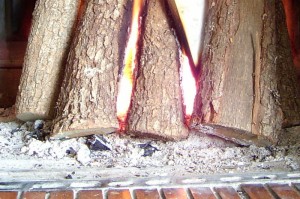Homeowners often daydream about the perfect evening in front of the fire, but what about the ashy mess that is left behind when the fire is put out? Do you clean it up, or do you leave it? Is that included in your annual chimney sweep and inspection? Since the basic chimney maintenance conducted by a professional technician is to keep you safe, they will take care of whatever they find when they come check your chimney. To schedule an appointment call Environmental Chimney Sweep today!
To leave or not to leave?
This may come as a surprise to many homeowners, but you are not supposed to remove all of the ash that may accumulate in the bottom of the fireplace or wood stove. The Chimney Safety Institute of America (CSIA) recommends that you leave approximately an inch of ash in the bottom of the firebox during burning season. This helps to build and maintain your fire by adding more heat to the fuel and then to the fire. However, the ash level you leave should be closely monitored because if it is coming in contact with the grate, it can cause it to burn out prematurely.
On the other hand, stoves that burn from front to back need to have the ash on the inside of the door removed. This allows a spot for you to move the hot coals from the back toward the front. A small layer of ash will also protect the floor of the firebox. At the end of the season it is important to remove all ashes. The acid in the ash and any moisture that might reach the firebox could begin to rust or cause deterioration in a metal or masonry fireplace.
How do you properly remove ash from your firebox?
Ash can be removed using many methods including a fireplace shovel and a wet/dry vacuum. This process should not be started for about four days so that the ash has plenty of time to cool down. The ashes should then be placed into a metal or clay container and discarded away from your home. To remove ash and soot from the glass on your door mix equal vinegar and water together in a spray bottle and gently clean off the glass with a paper towel.

